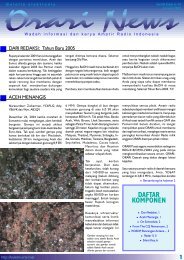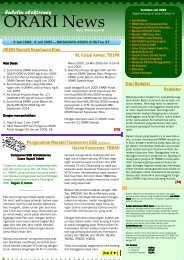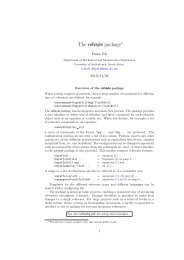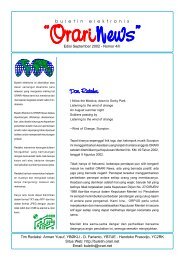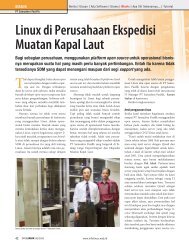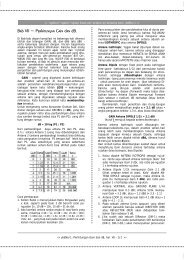You also want an ePaper? Increase the reach of your titles
YUMPU automatically turns print PDFs into web optimized ePapers that Google loves.
3.6 FILAMENT BY-PASSING<br />
<strong>Tube</strong>s having thoriated tungsten filaments generally use AC line<br />
voltage supplied from a filament transformer with the center tap used<br />
as the “cathode” dc return. DC is also used in some applications<br />
to prevent hum or modulation of the rf. In either case, with griddriven<br />
(common cathode) circuits, rf bypassing the filament to<br />
ground is necessary to complete the rf path to the tuned circuits<br />
(both the input and output). This path must be of sufficiently low<br />
inductance to prevent the filament from becoming above ground<br />
with respect to the rf. It may be preferable to ground one filament<br />
terminal directly to the chassis and bypass the other (hot) terminal.<br />
Ceramic and multi-layer mica capacitors are suitable for bypassing<br />
the filaments up to and above HF frequencies. With tubes having<br />
concentric isolated cone terminals (for an example see p. 27 fig.<br />
19), the preferred VHF circuit design will avoid straps altogether.<br />
In this case, an effective method is to bypass the filaments directly<br />
to ground through low inductance film capacitors mounted against<br />
the same chassis deck or cavity wall to which the screen grid is<br />
bypassed. The Eimac SK-350 is an example of a VHF socket with<br />
integral film capacitors used for the filament bypass.<br />
In cathode-driven (grounded grid) circuits, the filament terminals<br />
are isolated from ground in order to apply rf drive to that element.<br />
Any stray capacitance here can present a problem, because it is in<br />
shunt with applied rf voltage as well as being part of the input tuned<br />
circuit. The Eimac SK-375 is an example of a low capacitance<br />
socket available for use with certain tetrode tubes.<br />
Inductance in the thoriated-tungsten filament structure itself may<br />
be resonant at the fundamental or some harmonic frequency. To<br />
prevent this resonance from absorbing a portion of the applied drive<br />
power, a bypass capacitor directly across the filament terminals is<br />
used. This applies to both grid-driven and cathode-driven circuits,<br />
because rf fields exist within the tube between the control grid and<br />
filament in both cases. In some VHF fixed-frequency applications<br />
using thoriated tungsten tubes, a variable capacitor is connected<br />
directly across the filament terminals to effect a series resonance,<br />
which allows for optimizing the anode efficiency. This is believed to<br />
peak filament emission at the crest of the applied rf sine wave. RF<br />
chokes are often used in the filament leads even with the filament<br />
bypassed to ground. This will help reduce rf from appearing at<br />
the filament supply, because filament bypassing tends to be less<br />
than perfect even in the best designs, due to finite series internal<br />
inductances, which exists in nearly all capacitors.<br />
Indirectly heated oxide-cathode tubes may exhibit a broad gain<br />
56




